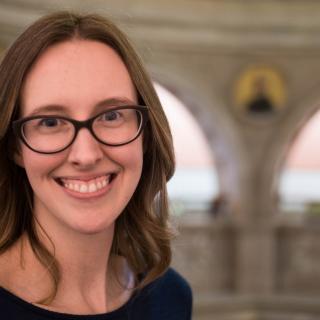
Science teachers have a unique challenge in the classroom: They have to engage both the minds and bodies of their students, combining hands-on experimentation with critical thinking skills.
Learn more
For an up-close look at the ambitious science teaching framework in action, K-12 educators can register for the “Energy and Science Matters Showcase” on Saturday, March 24, from 8:30 a.m. to 3:00 p.m. at Shorewood High School in Shoreline.
The showcase is designed to serve as an in-depth look at how the core practices of the teaching framework could support students studying energy and matter.
It can be difficult to implement this kind of dual-purpose approach in classrooms. Teachers may not have the tools, resources or support to do it effectively, or they may not know how to bridge the gaps between students of diverse backgrounds.
But a new book from researchers at the University of Washington (UW) College of Education aims to help.
“Ambitious Science Teaching,” from UW professors Mark Windschitl and Jessica Thompson, and Melissa Braaten, assistant professor of science education at the University of Colorado, Boulder, provides a blueprint for teachers and administrators wanting to elevate the level of engagement in their science classrooms for all students.
Using specific examples, strategies and tips, the book introduces four core practices necessary to achieve an “ambitious teaching framework” while also acting as a guide for K-12 educators who want incorporate these practices in their schools.
The ultimate goal of “Ambitious Science Teaching” is to assist teachers in their efforts to get more kids excited about science and engaged with the subject in multilayered, interdisciplinary ways.
ParentMap talked with Professor Windschitl, one of the co-authors, about what makes this book an important contribution to science education.
How did you and your co-authors identify the four core practices of the ambitious teaching framework? Is there something they all have in common?
We had a challenge in trying to develop a framework for ambitious teaching because the research in children’s science education tells us that there’s a lot of things a teacher can do in a classroom to support learning and participation by all different kinds of kids.
We had to ask ourselves, “If our teachers could become experts in just four things that really impact kids’ learning in the classroom, what would those four things be?” And that’s how the four practices were determined.
Are you asking teachers to simply look at their current instruction from a fresh perspective, or to adopt brand new practices into their teaching?
It’s definitely a combination. There are currently a lot of things teachers are doing that are good stepping stones toward a more ambitious kind of teaching. They do encourage kids to ask questions and they do get them interested in science through activities, but teachers could benefit from learning how to use students’ ideas about science — and their out-of-school experiences — to shape their instruction.
For example, what kind of lesson do I need if my students are studying sound and they’re really interested in the difference between music and sound, specifically? How can I instruct them in a way that’s engaging for what they find exciting?
The book emphasizes both talking and drawing as valuable ways to assess how well a student has learned something. How can teachers get more comfortable with those methods over, say, testing?
One of the big features of the framework is the scientific practice of modeling. Students represent visually what they think is happening with a particular phenomena, and then they revise their ideas and drawings over the course of a unit of instruction. Teachers are attracted to science modeling because it lets them see how many ideas students have, and figure out what they should be supporting.
As far as orchestrating productive talk in the classroom, it goes beyond students and teachers talking to one another. It’s also about kids in small groups and as a classroom group talking to each other. But that can take months — it’s baby steps toward that goal. So at the end of each chapter in the book, there’s something called “How do we get started?” and that outlines those baby steps for learning how to orchestrate dialogue in the classroom.
Strengthening teacher-to-teacher relationships is a key point in the book. Why do you recommend embracing and growing those kinds of partnerships, where teachers are truly working collaboratively?
Traditionally in education, when we think about great teachers and great teaching, we think of individual teachers with superpowers or natural instincts for the work. But we are arguing in the book that great teaching can be learned, and one of the principle ways to learn is to engage with other peers who are experimenting in a principled way with their own teaching.
When you reflect on your own teaching, and — more importantly — when you deprivatize your teaching by letting your peers see what you’re doing, then you can team up to make changes. It’s risky to make changes as an individual, but less so if you work with partners.
You describe the book as a guide or tool, rather than a formula meant to be followed exactly. Why is that distinction important?
Teaching is intellectual work and teachers are so well trained as experts in so many areas that it’s presumptuous to say there’s any formula they should follow. We want to provide them with tools and ideas they can choose from. It’s important that they can pick their own beginning place. Teachers need to start where they feel comfortable, so we want them to read the whole book carefully and then grow into the framework in their own way.
Why did you and your co-authors choose the term “ambitious”? What message do you hope it conveys?
It was hard to find a single word descriptor that captures what we think the framework is all about. We chose “Ambitious Science Teaching” because it requires teachers to have a greater grasp of their content, to develop new pedagogical skills, and to have a broader sense of equity in the classroom.
It’s not just that you’re teaching “better” in abstract ways — you’re getting better in specific ways that are individually important and raise the bar for education.











